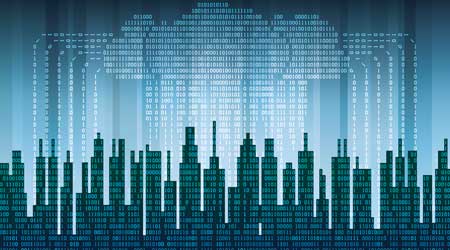What Is the Building Internet of Things?
Here's how to evaluate Building Internet of Things devices and systems to determine how they'll fit in your existing building automation system.
For facility managers, smart technology options are everywhere, from more sophisticated and powerful building automation systems (BAS), to specific pieces of equipment like rooftop units or meters with built-in intelligence, to a new generation of Building Internet of Things (B-IoT) devices and systems. While BAS and RTUs are familiar to facility managers, the B-IoT is new ground. To get the benefits of B-IoT technology, facility managers should understand how the new offerings will fit in with existing building systems, especially the building automation system, and the role of BACnet in ensuring a free, secure flow of information.
IoT vs. B-IoT
The first step in evaluating any B-IoT product is to make sure that it is truly commercial-grade. The smart home market is booming, with high-profile IoT offerings from such consumer giants as Apple, Google, and Amazon. All three offer IoT devices that can talk on the web and operate other electronic devices in the home.
So why not use those consumer IoT applications for commercial buildings? It’s not as easy as saying, “Alexa, make my building smart.” One problem is that homeowners are tied to adding the apps and features of one vendor. In other words, the typical home automation solution is built on a proprietary Apple, Google, or Amazon ecosystem. That’s because each of these suppliers wants to profit from serving as the information path for the home. Without national or international standards or open protocols for these IoT devices and systems, each communicates in its own cloud.
“Currently, consumer IoT is where building automation was 30 years ago, when the concept of BACnet was first conceived,” explains Andy McMillan, president and managing director of BACnet International. Selecting one device such as such an Amazon Echo or Google Home limits the selection of future devices. While McMillan has IoT devices in his own home and auto, he sees many stumbling blocks to simply importing consumer products into commercial buildings that require interoperability to perform well.
Along with the need to operate on a proprietary platform, most IoT devices are designed for the home market, which has fewer cybersecurity, access control, fire/life safety, and privacy concerns than a facility like a Class A office building or major hospital. If a consumer-grade IoT device has security problems, unplugging from the Internet until the matter is resolved is simple for a home that may have 10 to 12 IoT devices. A commercial building could have 20 or more suppliers with sensitive facility data in 20 different clouds.
Homeowners might not care if Alexa knows basically everything about them from their taste in music to when the children get home from school. But collecting so much personal data in the work environment could compromise occupants’ rights to privacy, particularly if one of the B-IoT clouds is hacked.
“IoT for commercial buildings needs a different model,” says McMillan. In other words, there’s a big difference between IoT and B-IoT.
Related Topics:













